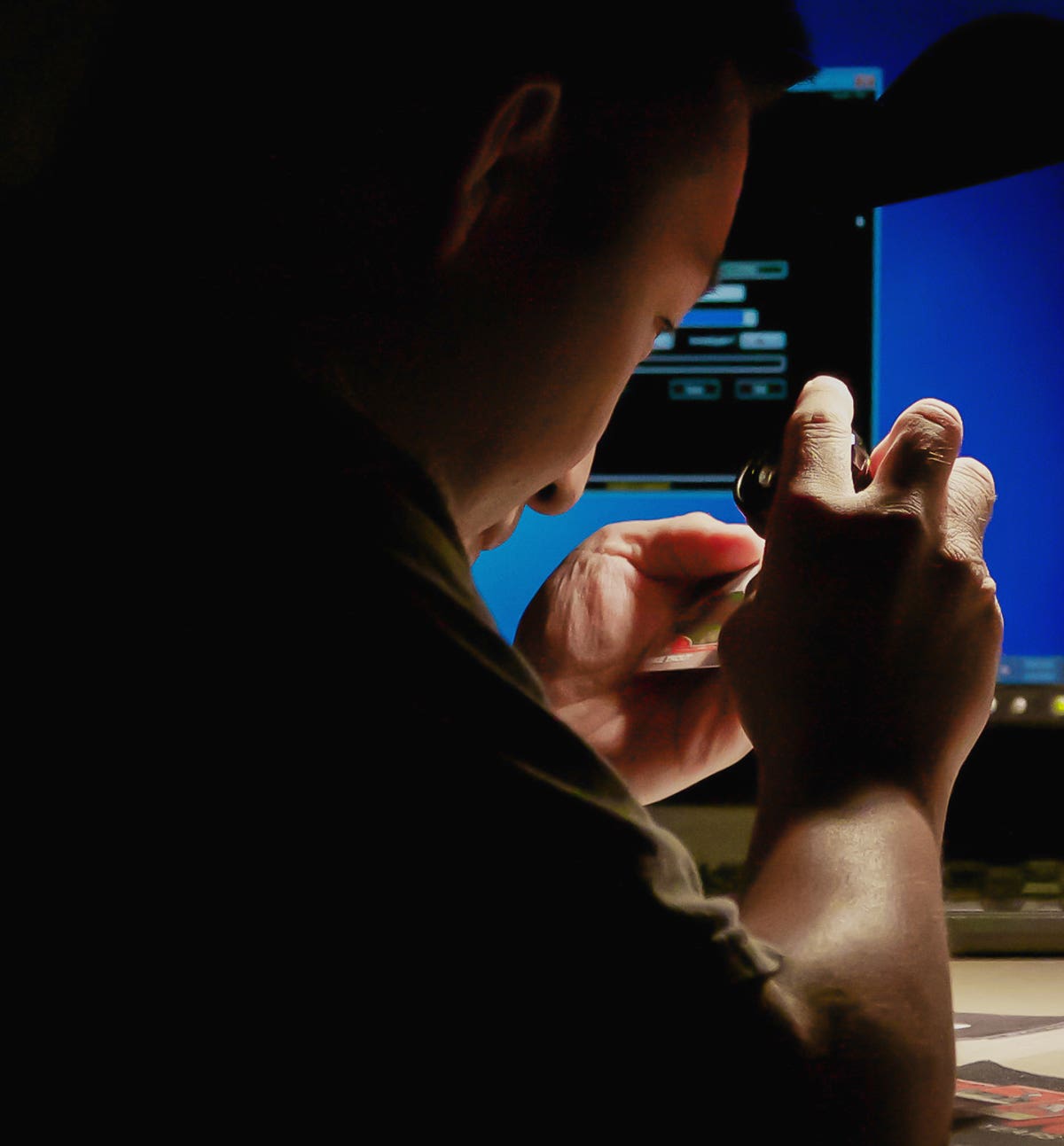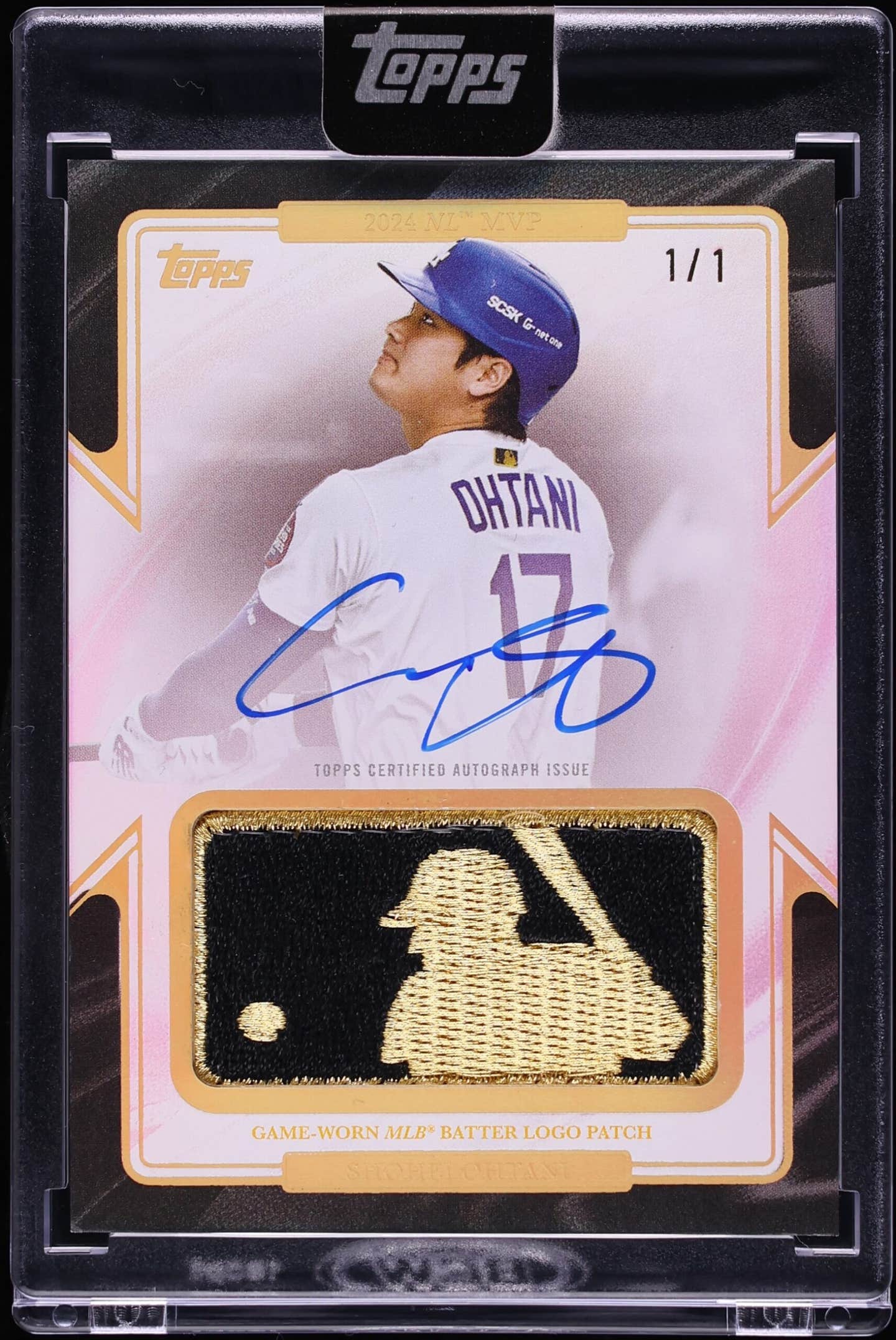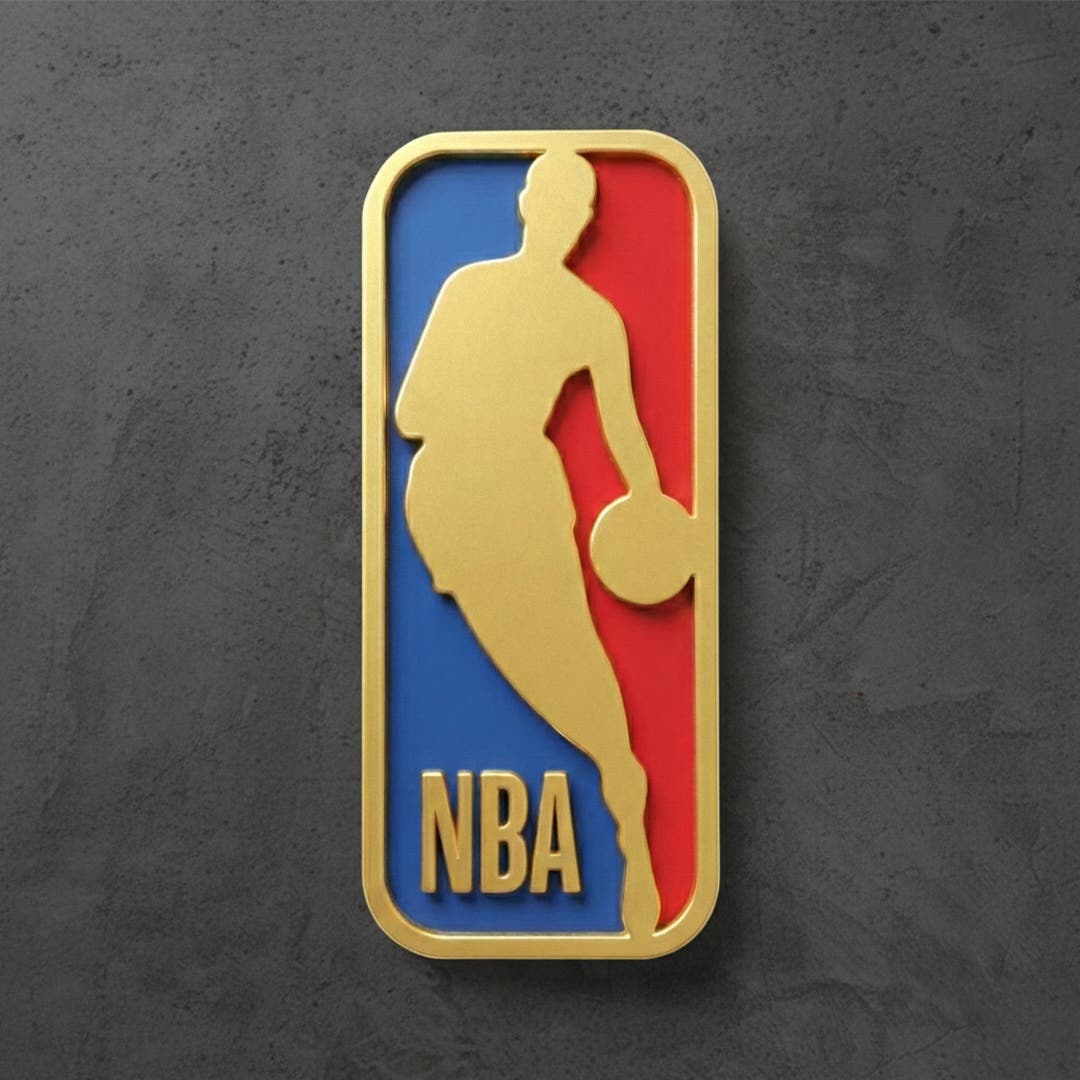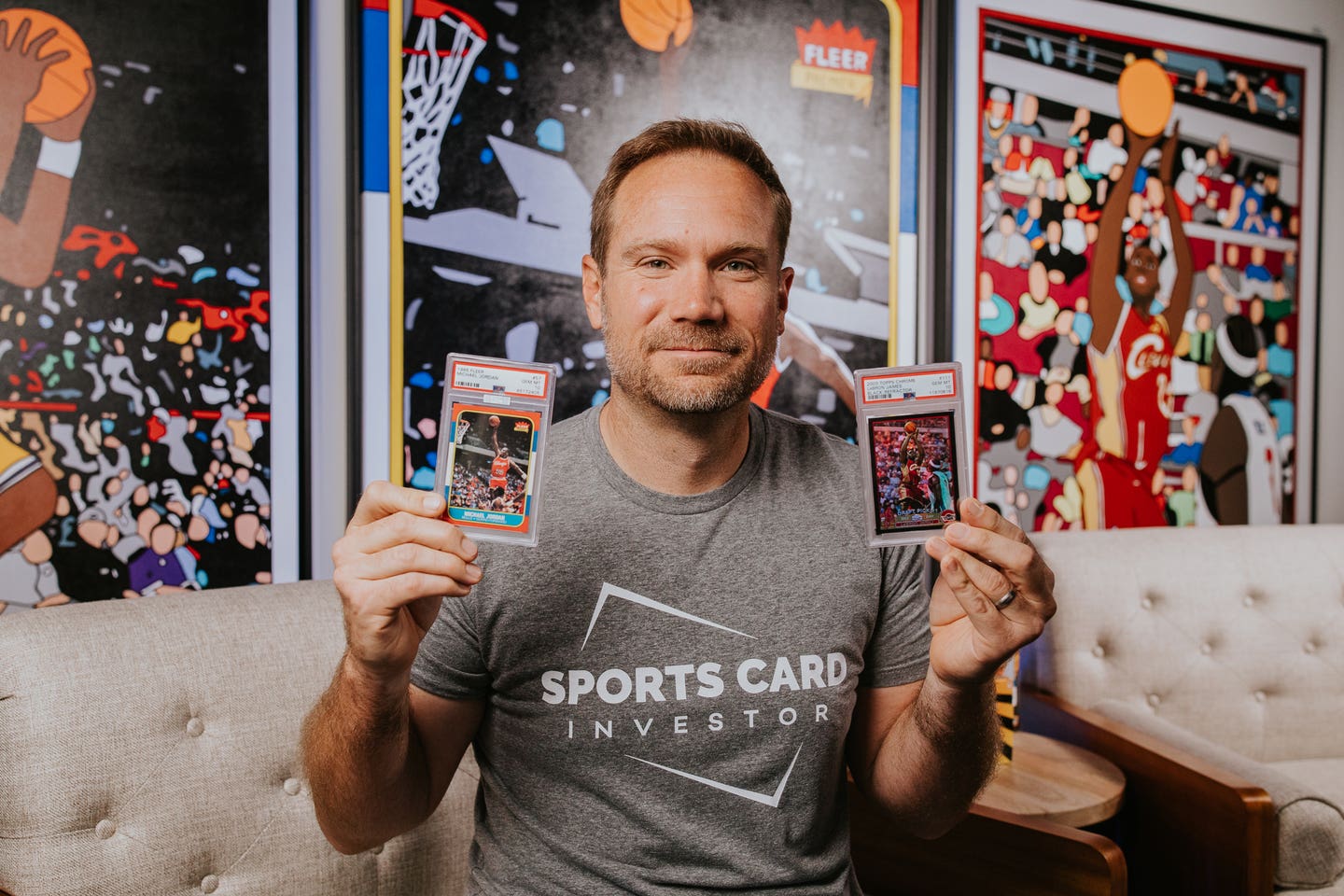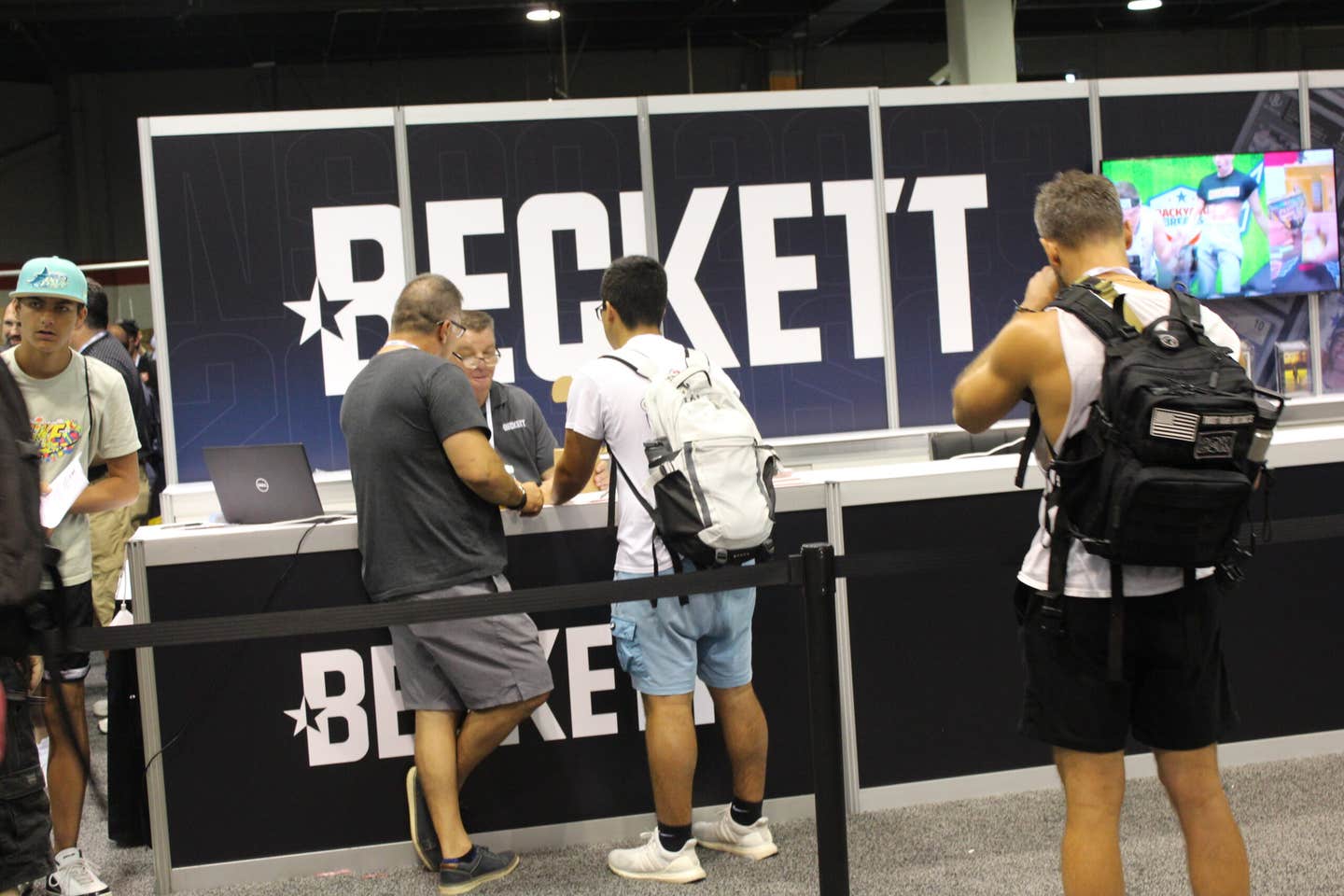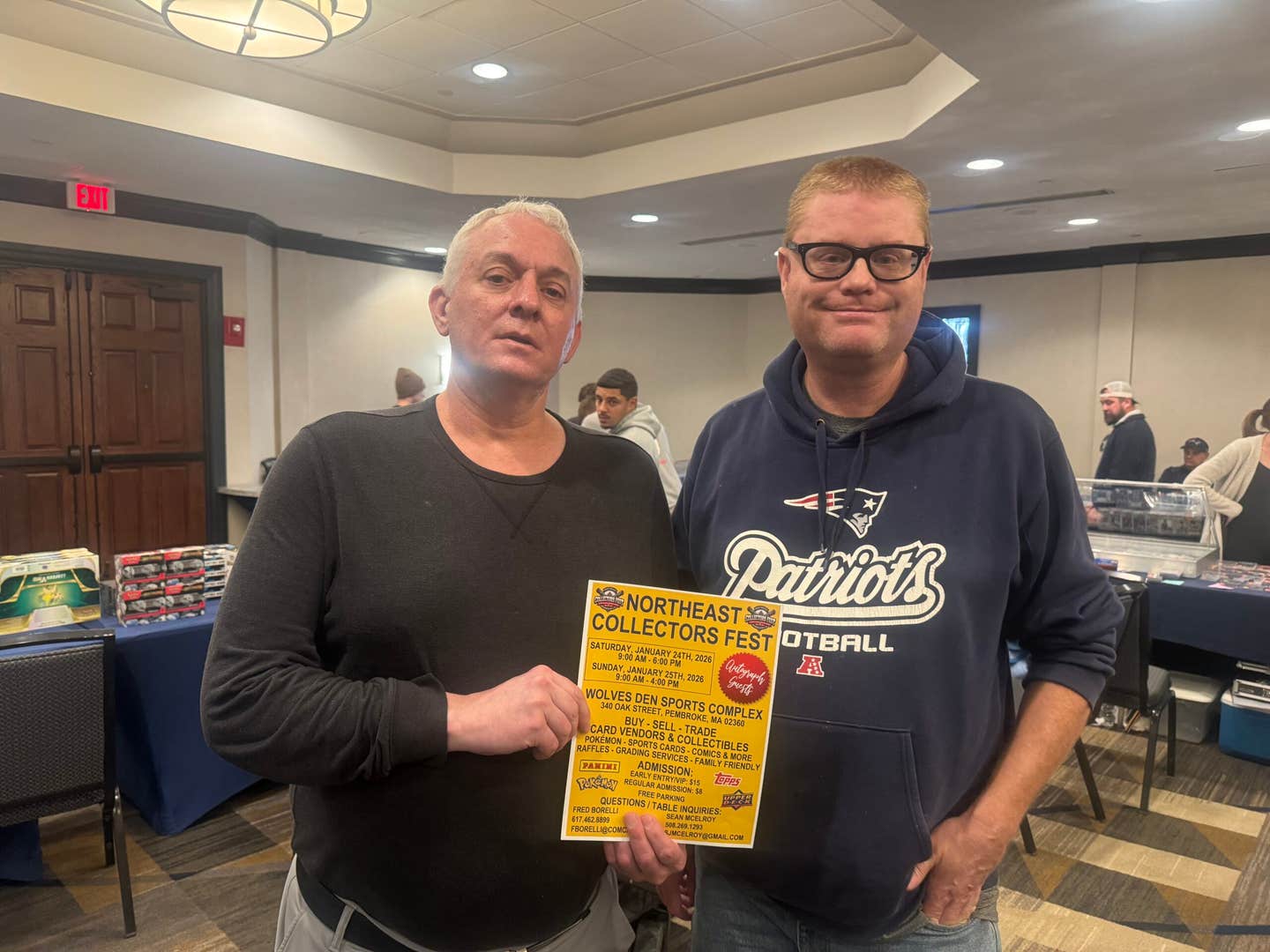News
Remarkable Rare Find Of 1934 Demaree Die-Cuts
By George Vrechek
A few months ago, a hard-working Wisconsin man looked under a bed and found 109 of some of the rarest baseball cards ever issued. I’ll call the man “Ken.” The cards are known in the hobby as the 1934 R304 Al Demaree Die-Cuts by Dietz Gum Co. of Chicago. I once described these cards as coming around about as often as eclipses. Before everyone starts looking under their beds, there is a bit more to the story, including why this obscure set is so interesting.
Ken has never been much of a collector and certainly had never heard of the Al Demaree Die-Cuts. However, Ken’s dad collected cards as a kid in the 1930s. Ken’s dad was born in 1921 and grew up in Dixon, Ill. He was always interested in sports, particularly the Chicago White Sox. He saved shoeboxes of Goudeys and other memorabilia. Ken’s parents moved to Ken’s current home in Wisconsin in the late 1940s. Unfortunately, Ken’s parents divorced and his mother pitched the shoeboxes to the dismay of Ken’s dad. When Ken was still a teenager, his dad told him the cards he saved would be his and, it would be great if Ken could do something with them some day. Ken assumed the memorabilia his dad referred to had been destroyed. It had, except for one box that survived. More than a year after his father’s death, with urging from a friend, Ken decided to go through the box his father had left him. It had been under his father’s bed for more than 40 years.
The Box
The box under the bed contained scrapbook-type clippings, old sports magazines, Goudeys (1935 puzzle cards that had been neatly cut into quarters), a few Wide and Fine Pen premiums and even a few 1963s, presumably from a pack purchase at the time. The magazines were from The Sporting News, Great Sports Heroes, Baseball Magazine and Baseball Digest – most from the mid-1930s. Ken found four gems in the box, all apparently surviving because of their unusual size: all four of the rare 1934 Goudey Premiums, roughly 5½ -by-9-inch cards of the World Champion Giants, the NL and AL All-Stars and a guy named Ruth.
Ken also found plenty of odd-looking, large cut-outs of baseball players, all laying flat and not folded as designed to form stand-up cards. These unusual 61/2 inches high and 15/8 to 13/4 inches wide cards didn’t neatly fit into the shoeboxes of Goudeys tossed by Ken’s mother. The cards were in great condition.
1934 Al Demaree Die-Cuts
Ken later learned the cards were the 1934 Al Demaree Die-Cuts, an impossible issue never entirely checklisted, thought to include up to 168 cards. The cards are a series of generic drawings with head photos superimposed. Poses are primarily fielding positions. Uniforms are colored red or blue. The base of the card includes the player’s full name and birthplace and was meant to be folded upward to form a base with a tab that would fit into a small semi-circular flap at the player’s midsection. The card stock is more like heavy paper than cardboard.
Ken counted 109 cards in the box, which included 87 singles and 22 duplicates. Of the singles, 30 of the cards are not listed in the current Standard Catalog of Baseball Cards. Three of Ken’s cards have numbers that were previously unknown, although the players were listed (missing the tabs). The unlisted cards found in the box include Hank Greenberg, Luke Sewell, Billy Herman, Goose Goslin, Earl Averill, Joe Cronin, Jimmie Foxx, two different cards each of Sam West and Chick Hafey, and three umpires.
In addition to these previously unlisted cards, the find includes HOFers Al Simmons, Luke Appling, Charlie Gehringer, Dizzy Dean, Pie Traynor, Paul Waner, and umpire Bill Klem. Babe and Lou didn’t make it to the box.
Ken picked out three cards and had them graded by PSA. The previously unknown Goose Goslin No. 30 came back a PSA 5 (Excellent), the previously unknown No. 159 Babe Herman graded PSA 4 (VG-Ex), and No. 145 Pie Traynor graded PSA 2 (Good). Ken’s feeling is that the bulk of the cards are at least as good as the Goslin or Herman cards. The condition of the cards was certainly better than I would expect for an issue which, we will learn, was designed to be marched around in a baseball board game.
Ken Calls
Ken found me through the Internet based on two articles I had written for SCD. One story reported my visit to view Jefferson Burdick’s 306,353-card collection housed at the New York Metropolitan Museum of Art. Prior to my visit, I researched some of the scarce baseball issues to check against what Burdick had in his collection. The R304 Al Demaree Die-Cuts were on my list. I had never even seen an Al Demaree Die-Cut card. While Burdick (the father of card collecting and originator of the arcane nomenclature system) never claimed to have collected everything, he did have complete sets of most of the issues from the 1930s, but only six of the R304s.
My next article mentioning the R304s was about collecting sets from the 1930s. My research showed that while the completed listings on eBay included 3,676 of the 1933 Goudeys, there were only two listings for the R304s in the same period, although a handful more have popped up in pricier auctions outside eBay. I included the Al Demarees in the category of impossible sets to collect. A recent online poll also included the Al Demarees in the impossible category. I checked with a few very experienced vintage dealers who had never bought or sold an R304.
Hobby History References
Burdick’s bimonthly Card Collector’s Bulletin didn’t mention the existence of the set until April 1941 as set No. 536, Baseball Cutouts, Al Demaree, with a value of 2 cents each. Burdick’s 1946 American Card Catalog listed the issue with a new name, R304, without a known number of cards in the set. Burt Sugar’s The Sports Collectors Bible from the 1970s listed 14 known R304s, with a value of $25-$35 each (versus $2-$3 each for 1952 Topps commons at the time). Most price guides in the 1980s didn’t bother listing the R304s because of their scarcity. A 1989 The Trader Speaks article described the set and listed 70 known cards with recent discoveries of Ruth and Gehrig. The 1997 Standard Catalog of Baseball Cards listed the set with 83 known cards, the highest card number being No. 167. The 2008 Catalog brought the number of known cards up to 120. Thanks to Ken, the number of known cards is now 150.
Dietz Gum?
What do we know about who issued these cards and why they are so scarce? There are many candy companies in Chicago but, as a Chicagoan, I had never heard of Dietz Gum. Researching businesses can be challenging, if a company is not publicly traded and has gone out of business. Many companies try to keep a low profile even if they are successful. A trip to the main Chicago Public Library led me to annual reports filed by corporations in Illinois. I found Dietz Gum Co. of Chicago listed in 1934 at 1732 W. Austin Ave, Chicago. But wait a minute; I was pretty sure there was no such address. Austin is a boulevard and it runs north and south. Corporate officers included Sam Jaffe and Sol Leaf. “Leaf” was an interesting name. Could it be the very same “Leaf” as in Leaf Gum? I turned over a few more “leaves” and found that Overland Candy (R301 issuer) was also listed as a corporation owned by Sol Leaf and at 1732 W. Austin. I looked further and found both companies had been at the same address in 1928 as well, but by 1942, the address was 1732 W. Hubbard. That made sense. There is a Hubbard Street in Chicago; they changed the name of the street.
1732 W. Hubbard
I visited 1732 W. Hubbard in the hope of finding some Al Demaree Die-Cuts still laying around in the trash (not really). The three-story manufacturing building appeared to have been built before 1920. The building now houses architects, web designers and photographers, but no one making gum or baseball cards. I talked to a few tenants and the current young owner of the building and soon found that I knew more about the building’s history than they did. I later learned that not only was gum and candy made there but probably baseball cards, as well.
Back to the Library
Now I was looking for “Leaf” and not “Dietz” to get more information on this issue. Back in the library, I found that by 1947 both Overland and Dietz’s names disappear and are replaced by Leaf Brands Inc. Sol Leaf was the founder of Leaf Gum! A Chicago Tribune article from 1951 stated that the Leaf Companies employed 1,500 people and were producing 5 million pieces of candy and bubble gum in five Chicago plants every day. According to the Tribune, Sol Leaf “came to Chicago in 1921 from New York City where he had manufactured candy on a small scale. He started (in Chicago) with three employees and his brother, Harry, joined him in 1924 ... Leaf’s son Marshall S. Leaf was vice president.” Sol Leaf’s 1972 obituary stated that he had retired from the business years earlier and that his son, Marshall S. Leaf, had taken over.
An Interview with Marshall S. Leaf
An hour later, I found the 86-year-old Marshall S. Leaf still very much alive and well and living a few blocks from me in Chicago. He graciously took my phone call. Marshall was 12 years old in 1934 when the Al Demaree cards were issued. He had no idea what I was talking about using the hobby lingo of R304s and Al Demaree Die-Cuts. Even the name Dietz Gum was initially a bit vague. I should have used the name “Ball Players in Action Chewing Gum Standups,” which would have made more sense. It was the name on the scarce gum card wrapper that I found later.
Over the next hour of our conversation, I learned about Sol and Marshall Leaf and Leaf Gum. Marshall Leaf said that his father “would use every name for his business other than ‘Leaf.’ The principal entity was called Overland Candy and the name Dietz came from one of the foremen, Joe Dietz, who had no ownership at all in the business. The companies were all in the same building with the same owner – Sol Leaf.”
Other names used were Chicago Biscuit Co. and Leaf Machinery. Only the names were different. I recall that until the 1960s, it was advantageous for businesses to operate under different corporate entities that would be entitled to lower tax rates on the first portion of their earned income. (SCD’s CPA/collector readership will enjoy rereading Section 1561 of the IRS Code.)
Cards Made the Gum Look Better
Sol Leaf had an eye as to what sold and how to make a profit, according to Marshall. Goudey and others were issuing cards with gum. Sol Leaf thought it a good idea, as well. The slab of gum needed to be wrapped and the package needed some shape – perhaps bigger than the actual gum. You could put a piece of cardboard in the package, but why not put something on the cardboard? Ironically, 1732 W. Hubbard had been a cardboard box manufacturing plant prior to Sol Leaf’s purchase. Any subject was a possibility and no one was too concerned about getting permission to use someone’s image. Marshall said that his dad would dream up ideas while driving to work.
Marshall Leaf was more of a sports fan than his father and closer in age to the company’s typical consumer. According to Marshall, his father “didn’t really have much interest in sports. He never even attended a baseball game,” although he lived four blocks from Wrigley Field. Marshall provided input to his dad about the Al Demaree baseball issue listing players from the local teams. Because 29 of the 30 Cubs, White Sox and Cardinals in the set have now been checklisted, it is possible that these players were issued in greater quantities. The Trader Speaks article of 1989 had a similar speculation.
Numbers
Marshall remembered that they would intentionally skip numbers to get kids to try to collect the set. This was apparent with the 1948-49 Leaf issues. While Marshall couldn’t remember specifically whether the Al Demaree issue was skip-numbered, he said that it was entirely possible. I told Marshall that some of the numbers had more than one player and the same player would appear with different poses. He said that all made sense as well.
The set has at least three numbers (known so far) with two different players sharing the same number: No. 102 for both Mark Koenig and Ernie Lombardi, No. 133 for Shulmerich and Jo-Jo Moore, and No. 155 for Jimmie Foxx and Billy Jurges. Several players appear with different poses: Al Simmons, Mickey Cochrane, Pepper Martin, Pie Traynor and Chuck Klein. Included in Ken’s find are two new cards of Hafey (Nos. 105 and 109) and Sam West (Nos. 44 and 47).
The Game Board
The cards were meant to be used with a game board that was obtained from candy dealers, who were to give out boards in exchange for 10 wrappers. At least one of these boards has survived, and an image was posted recently on the Net54 website. There are spaces for the standup cardboard players at each of the nine positions, plus a spot for a batter and umpires. The game could be played by rolling dice or listening to a game on the radio and moving players around on the board. All together, this was a rather elaborate first effort for Sol Leaf: die-cut cards, tabs, wrapper redemption, playing board and even umpires.
Glasser Article
Ken found a 1998 article in VCBC (Vintage and Classic Baseball Collector) by Gerald Glasser which shed further light on the cards, wrappers and game board. A light bulb went off when I saw the game board, read the article and added in the cards from Ken’s find. My thought is that this issue is far from being like the skip-numbered 1948 and 1949 Leafs remembered by Marshall Leaf. This issue was not cut off in midstream by possible litigation. Nine position players are in the set for each team (nobody needed a relief pitcher in those days). The best hitter on each team was also shown in a batting pose to be in the batter’s box when playing the game. Sixteen teams had 10 cards each covering nine different players. You needed four umpires to officiate a game, four from each league, 168 cards in total.
The Still-Missing Players
Everything about this issue started to make sense. Somewhere out there are another 18 cards that include Babe Ruth, Bill Dickey, Heinie Manush, Bill Terry, two more umpires and 12 others. My hunch is based on figuring out what positions are missing from each team and who played the missing positions in 1933 and 1934 per the Baseball Almanac.
I think there are 168 cards in the set (if one could ever be assembled). The set is numbered 1 to 168, but at least three numbers are missing and three other numbers are double-printed with two different players. I also think Al Demaree himself came up with the numbering and lineups, although the Leaf boys encouraged the missing number idea that Goudey had used the year before.
The players chosen seem to be very accurate as to who would likely be in each team’s starting lineup and who was the best hitter. One stretch was including rookie Hawaiian Prince Oana as a Phillies outfielder. Oana lasted the first month of the 1934 season before returning to the minors for nine more years. His card though has remained on many want-lists. The No. 4 card in the set is Ruth in a batting pose, discovered a few years ago. There has to be another Ruth with a glove to play right field and the Yankees had to have a catcher. Bill Dickey and Babe Ruth are in another oversized shoebox someplace in the world, probably near a cornfield like in Field of Dreams! Their card numbers will be 2 and 8.
Gum Gets Tossed
Marshall Leaf pointed out to his father that the kids were really collecting the cards and throwing the gum away. His father then tried issuing cards without the gum. Marshall mentioned the issue of U.S. Presidents by his father. There were others as well. The American Card Catalog listed the following issues attributable to either Overland or Dietz: R118 Presidents, R162 Walt Disney pictures, R175 WWII Colored Photos and R182 Magic Fortune Cards. There were probably others as well that wound up in the unknown or anonymous categories. Marshall didn’t think he had bothered to keep any of the Al Demaree Die-Cuts. I told him about the find of cards in Wisconsin. It brought back good memories to Mr. Marshall Leaf, a real gentleman.
Other Baseball Issues by Leaf
The 1934 R304 issue turned out to be the first, and for many years only, baseball card issue by Sol Leaf. Marshall Leaf surmised that the effort was not particularly profitable and there was no reason to try it again the next year in the middle of the Depression. The company did use ballplayer images though on their candy wrappers in 1936. This “issue” is known as the R301 Overland Candy Co. of 1936 with 57 known wrappers including Foxx, Gehrig and Greenberg.
By the late 1940s, the Leaf name was used and they started issuing baseball cards again as well as football cards (sets that now list at about $100,000 in Near-Mint). Marshall didn’t remember that they did anything to gain the rights to the players’ images then either.
They eventually let Bowman and Topps have the card market. The Leaf and Topps people knew each other and were respectful competitors. The 1960 American Card Catalog stated the “post-World War II period began with three major card publishers: Leaf Gum of Chicago, Bowman of Philadelphia, and Topps of Brooklyn. Leaf discontinued card issues in 1950 after a legal dispute with Bowman over baseball player photo rights.” Leaf did come back again with another one-year wonder: the 1960 Leaf issue, although “Leaf” is not mentioned on the cards. They are attributed to “Sports Novelties, Inc., Chicago.”
Leaf Brands continued to grow into a very significant company and was sold in 1983. Leaf eventually became part of Hershey Foods. By 1996, the separate identity of the Leaf operations disappeared entirely into Hershey’s. However, the trading card name “Leaf” lived on with Donruss/Pinnacle again starting in 1985 and into the 21st century.
Ken’s Cards
Ken has this incredible find of R304 Al Demaree cards and the Goudey premiums put away in a safe deposit box for now. He has researched the cards and the prices realized for other R304s. As previously described, he had three of the cards graded and they came back PSA 5, PSA 4 and PSA 2. It would be hard to imagine that there is anyone else in the world with 109 R304s. He has made no commitment to sell the cards yet and will weigh his options and consider any offers. His father would be happy to know that Ken will be able to “do something” with the cards.
Our thanks to Ken for sharing this information with the hobby and filling in most of the blanks concerning this interesting set. Ken can be reached at: camino34@ymail.com. Send him a note.
George Vrechek is a freelance contributor to SCD and can be contacted at vrechek@ameritech.net.



